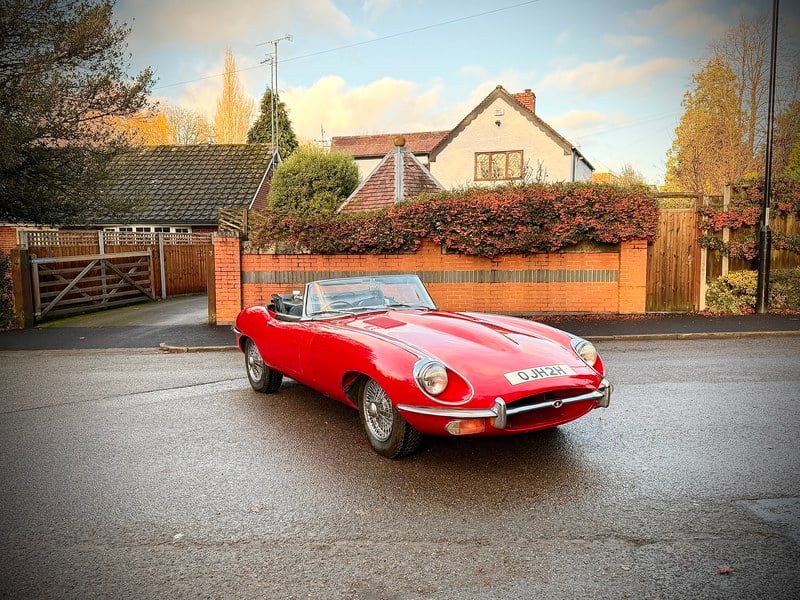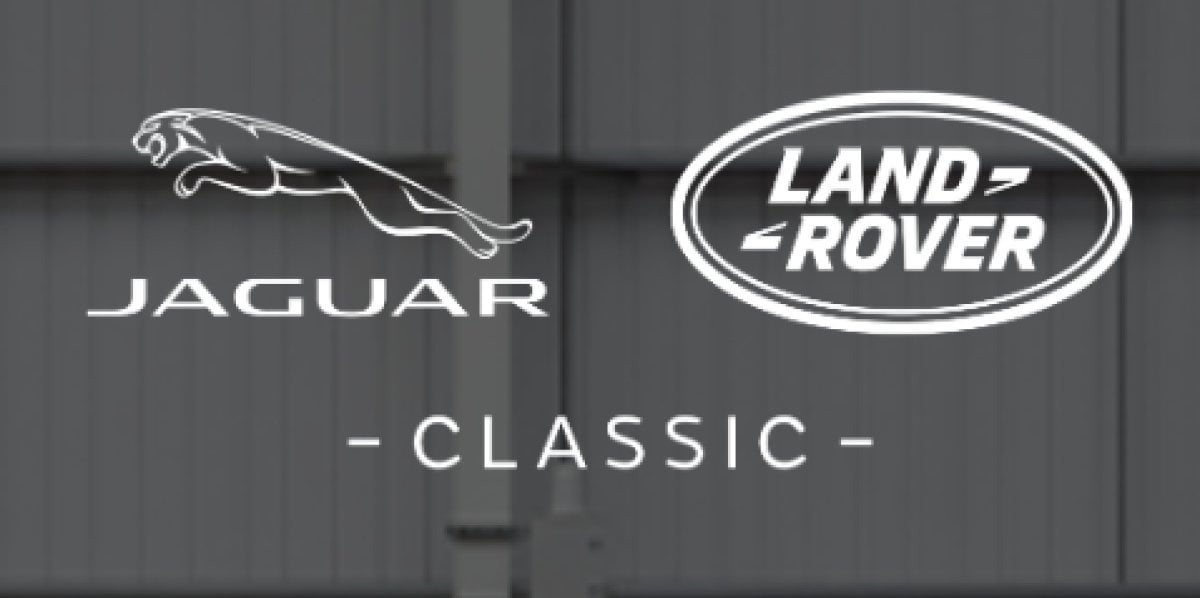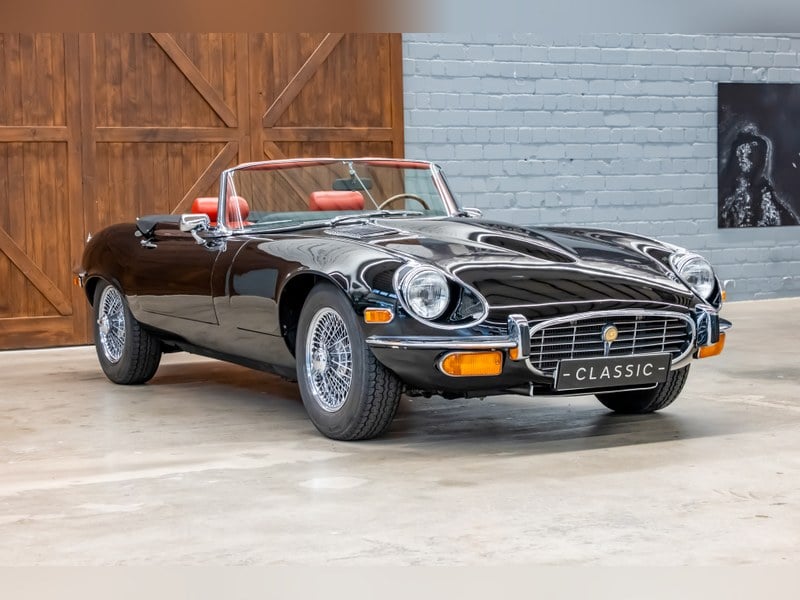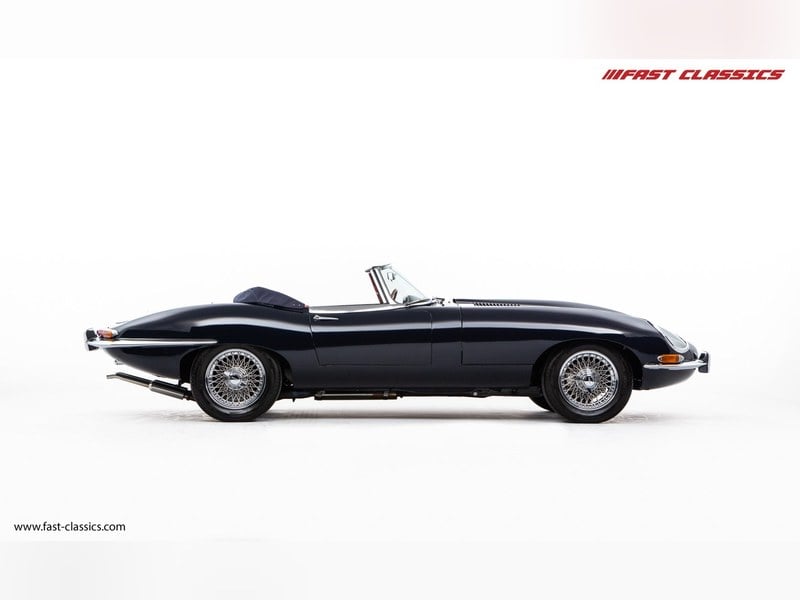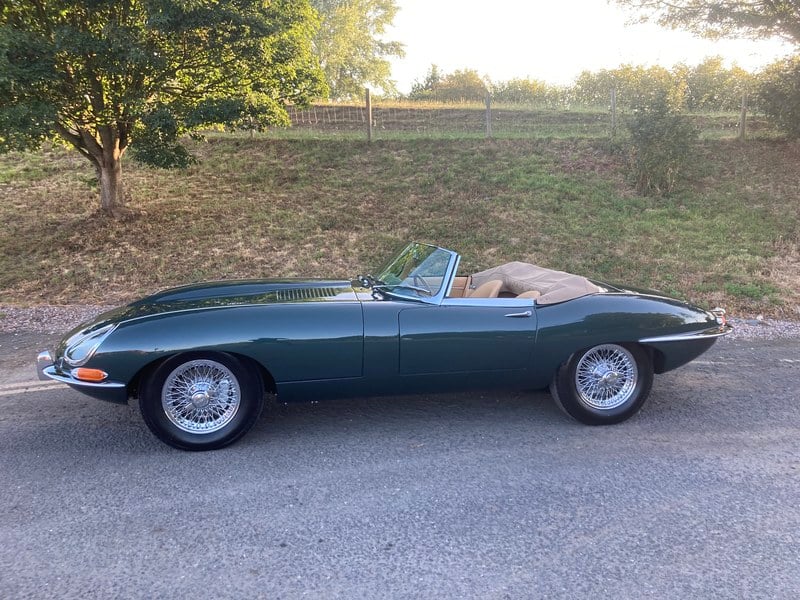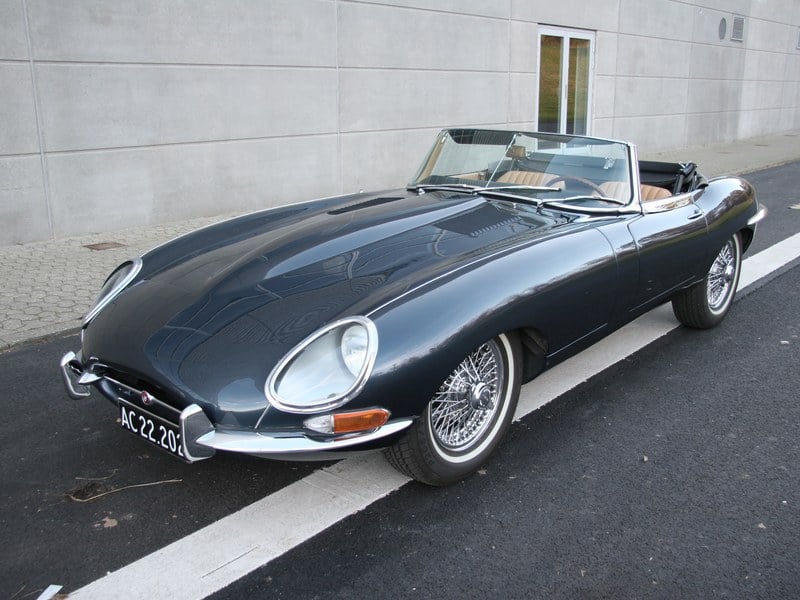Beschreibung
When Jaguar unveiled its E-Type at the Geneva Motor Show in March 1961, it was a complete surprise. It was a surprise because no one had received any prior information about the Coventry-based brand's future Grand Touring, and also because the E-Type's styling totally captivated the crowds. A line signed by William Lyons, a sporty yet comfortable chassis and first-class performance characterized the new Jaguar E-Type. Not to mention the unrivalled price, which was three times less than a Ferrari and half that of a Maserati...
Since the end of the war, Jaguar has been the perfect symbol of the English Grand Touring. The whole genealogy of XK roadsters (120 to 150) has largely contributed to build this sporty image in addition to the numerous victories in major competitions. But at the dawn of the 1960s, despite all their qualities, the XKs could not hide their age. So, in secret, Coventry worked on a replacement. The journalists of the time were kept completely out of the loop and the few perspective drawings that were revealed were far from reality. On March 15 at the Geneva Motor Show, there was a rush of journalists in the Eaux-Vives park. They all wanted to have a preview of the new star of Coventry. Then, it's the big crowd at the Geneva show. The comments and reactions are dithyrambic. Each time a Jaguar E-Type appears in the street, there is a crowd. Many stars and personalities were quick to order the beautiful English car: Françoise Sagan, Johnny Halliday, Bernard Consten, Charles Trenet, Pierre Bardinon, Robert Hirsch, not to mention the crowned heads. But not only satisfied with offering a breathtaking line, the Jaguar E-Type could boast of having a chassis very advanced for the time...
The design of the Jaguar E-Type has often been attributed to Sir William Lyons. But as in every car genesis, there is a captain at the helm, and a whole team behind him working in his shadow. Malcolm Sayer, an aerodynamicist from the aircraft industry, was responsible for the design. Using a very light tubular chassis, our English designer gave the Jaguar E-Type an immensely long and flat hood that quickly contributed to the magnetism of the noble GT from Coventry. The opening of the hood is total with the complete block tilting forward and uncovering the entire engine. At the front, a small grille looks like a suggestive open mouth leaving the door open to the most fertile imaginations. Two round headlights are under globes and recessed. The rear is a fastback with the roof coming down to the slim taillights. The glass surfaces are distinguished by very thin and elegant chrome-clad pillars. Finally, the rear of the Jaguar E-Type is characterized by very curved wings. As you will soon realize, there is a lot of charm and femininity in this design. The finish on board does not suffer from criticism, on the contrary, and a consequent trunk allowed to consider long trips. Isn't that the main purpose of a GT car?
Jaguar owes so much to the XK engine that we cannot talk about it without recalling its history. When the Jaguar XK120 roadster was presented at Earls Court in 1948, the British car show, the public fell in love with it immediately. Its name "XK 120" comes precisely from its engine and its performance. Equipped with the XK block, this in-line six of Jaguar design, it allowed the Jaguar XK120 Roadster a maximum speed of... 120 miles per hour! Born in 3, 4 liters with a cast iron block and an aluminum cylinder head, its distribution was done by two overhead camshafts. Not bad in 1948! For the Jaguar Type E, Coventry equips it with a rebored version of the engine XK. The in-line 6 has now a displacement of 3, 8 liters (87x106 mm) and keeps its character of long stroke engine. This means more torque from the lowest rpm. The power announced by the factory is 265hp SAE at 5500 rpm and a torque of 35. 9 mkg at 5500 rpm. Even today, the performance provided by the XK 3. 8 engine to the Jaguar E-Type is uncommon, with a top speed of 240 km/ h and a 0 to 100 km/ h time of less than 8 seconds.
For its chassis, the Jaguar E-Type has been the object of the most attentive care. Indeed, many solutions were taken from the competition. For the new Coventry GT, the chassis engineers (Bob Knight and Norman Dewis) designed a cradle that is independent of the body. It receives the rear suspension, the brakes, and the differential. It is then attached to the body by V-shaped silents blocks. This allows to isolate the passenger compartment from any parasite coming from the suspensions and/ or from the irregularities of the road. For the front end, it's almost a "copy and paste" of the D-Type racing structure. Two triangulated levers are superimposed on each other, the lower one hosting the front end of the longitudinal torque arm. To slow down its sharp-clawed feline, Jaguar used the principle of disc brakes, which had been successfully introduced in the 24 Hours of Le Mans in June 1953 with the Jaguar C-Type. All four wheels are equipped with disc brakes and a separate dual braking system is fitted. With a contained weight of 1, 220 kg, the Jaguar E-Type boasts a very flattering power-to-weight ratio that allows it to apply for true sports car status. The handling is very modern, and it is especially the driving comfort that amazes. It's easy to understand why Jaguar has built a reputation for itself in the field of chassis.
Unlike the D-Type, the E-Type was not initially designed as a race car, but that didn't stop the factory from supporting some well-known privateers. Graham Hill for Equipe Endeavour with ECD400 and Roy Salvadori for John Coombs with BUY1 had some success in 1961 against the dominant Ferrari 250 GTs, but it was clearly a competition between a road car (the E-Type) and a lighter, built-to-win Ferrari. No Jaguar appeared at Le Mans in 1961. But that same year, John Coombs' car was a in fact a factory development car. It was built with a thinner steel monocoque. It reappeared at the start of the 1962 season registered 4WPD, with a Type D wet sump engine, improved brakes and suspension, and an aluminum hardtop. This car, which was destroyed during the Easter Cup at Goodwood (driven by Salvadori), was rebuilt by the factory to what would henceforth be called "Lightweight" specifications. Subsequently, 11 more Type E Lightweight roadsters were built, plus two more coupes and a dozen semi-lightweights.
The true Lightweight specification included an all-aluminum monocoque, all-alloy 3. 8-liter dry-sump engine, Type D Wide Angle cylinder head, Lucas mechanical fuel injection, ZF 5-speed transmission, Mk IX disc brakes, hardtop, aluminum doors and trunk, wider rear track with modified Mk X wishbones, anti-dive front suspension, lower steering rack, sport seats, special Dunlop alloy wheels similar to Type D. This reduced the weight by 270kg and with more than 340hp, the E-Type became a real opponent to the Ferrari 250 GTO. But due to reliability problems, most of the ZF alloy engines and gearboxes were soon replaced by Jaguar cast iron blocks and in-house gearboxes. Despite this, the factory never really supported the racing program, and by 1964, it was all over. The Lightweight arrived 2 years too late and was never sufficiently developed.
Today, Jaguar E-Types in their FIA version are racing all over the world with ever increasing success. The sporty qualities of the E-Type make it a formidable racer today, whether in the rugged stages of the Tour Auto, the hotly contested TT race at Goodwood or in endurance races such as the Sixties' Endurance or the Spa 6 hours.
Our Jaguar 3. 8L Roadster was delivered to the American dealer in New York on August 14th 1963. After a quiet life in the USA, our car was imported to Europe and modified in 2011 by Martin O'Connell Racing. It's a Semi-Lightweight specification race car with a steel monocoque, dressed up with an aluminum bonnet, hard top, boot and doors. It then passed to Pearson Engineering who will take over the complete set up before we source the car for one of our customers in December 2019. The gearbox is a fully synchronized Denis Welch close-ratio, with power transmitted via a racing clutch to an oil-cooled limited-slip differential. Jaguar Mk9 front calipers, Dunlop magnesium alloy wheels, etc... The cast iron 'straight port' engine was rebuilt in 2023 by AS Classic Engineering (Alexandre SURBERE), who has just serviced it after 10 hours on the track. A recent visit to the power bench revealed 320 bhp and 417Nm of torque.
Our E-Type has proved to be a very fast and reliable Jaguar with successes in the HSCC, the Masters and the E-Type Challenge. It has also competed at Goodwood in the dedicated E-Type race, as well as in the VSCC's Pomeroy Trophy, finishing 5th overall, and more recently in Peter Auto's Le Mans Classic and Sixties' Endurance.
Accompanied by an FIA International PTH valid until the end of 2030, this E-Type has always performed well and been extremely reliable. It comes with a set of spare wheels, a spare gearbox to rebuild and a host of spare parts to give you peace of mind for any race.
It's ready for the 2024 season!





